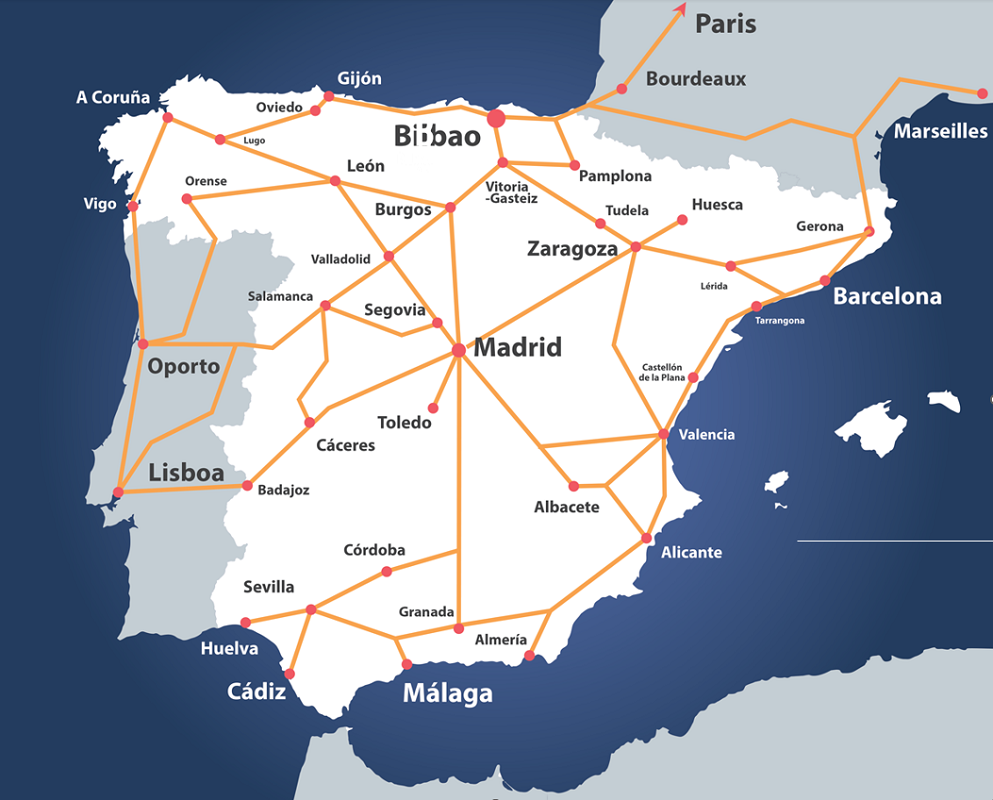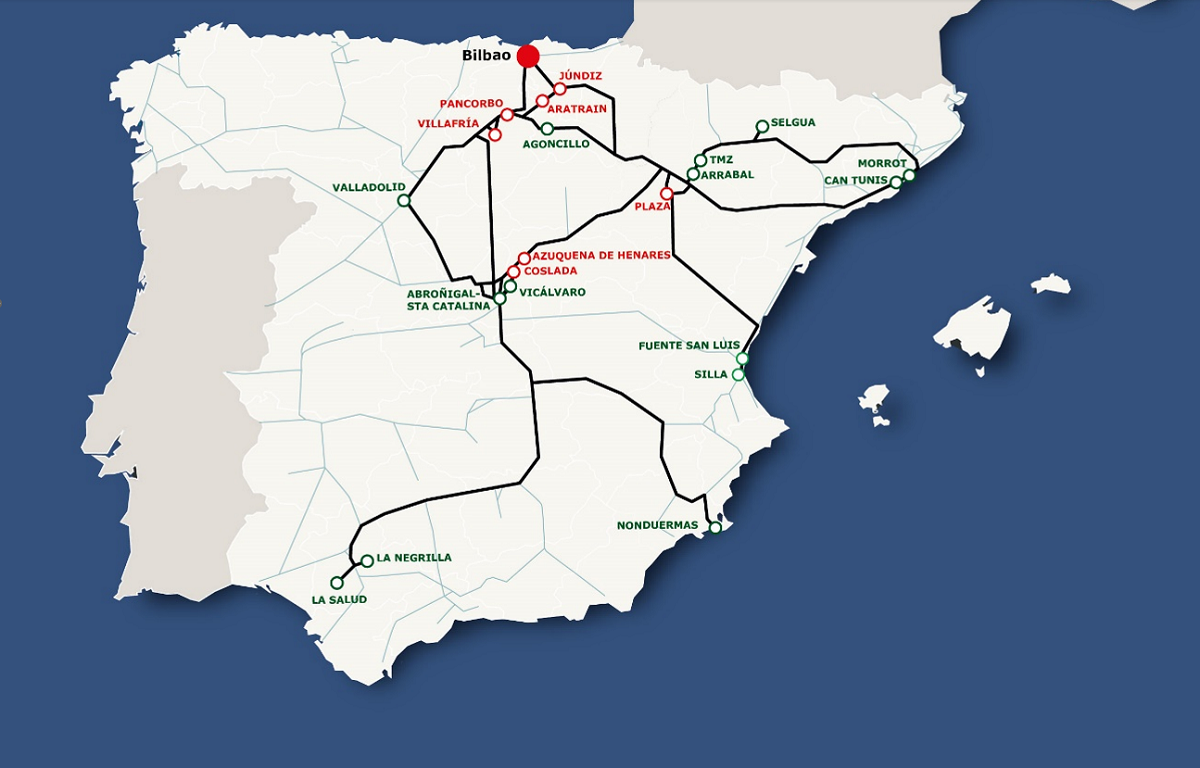By rail, the Port of Bilbao is directly linked to the Spanish national network and through this, to Europe and Portugal. It also has links with local networks.
The Port of Bilbao is connected to the vast European motorway network with direct accesses to cities like Madrid and links to many other urban areas. A lorry takes less than 4 hours to cover the Bilbao-Madrid route.
- From the Port of Bilbao, taking the A-8 motorway to the east leads to Bordeaux, while in the opposite direction there are the Cantabrian Coast towns like Santander and Gijon, as well as those in northern Castile
- The A-8 motorway links the Port to Zaragoza and Barcelona
- The A-1 motorway connects the Port of Bilbao to Madrid, with links to Lisbon and the towns in the south of Spain

Bilbao is the port on the Atlantic Arc which makes most use of the railway, being moved by rail into or out of the Port’s facilities. Each week, some trains enter and leave the freight station at Bilbao either departing for or arriving from Madrid, Barcelona, Valencia, Sevilla, Burgos, Zaragoza, Vitoria, Huesca, La Rioja, Navarra, Murcia and Guadalajara. All Port of Bilbao docks have road or rail accesses directly linked to the European motorway networks. In addition, within the very port facilities there is a TECO terminal and a marshalling yard with the following characteristics:
- Surface: 120.500 m2
- Marshalling Yard: 8 tracks between 500 and 780 meters long
- Cargo Terminal: 2 400 meter long tracks
- TECO Terminal: 6 450 meter long tracks


 Port access
Port access